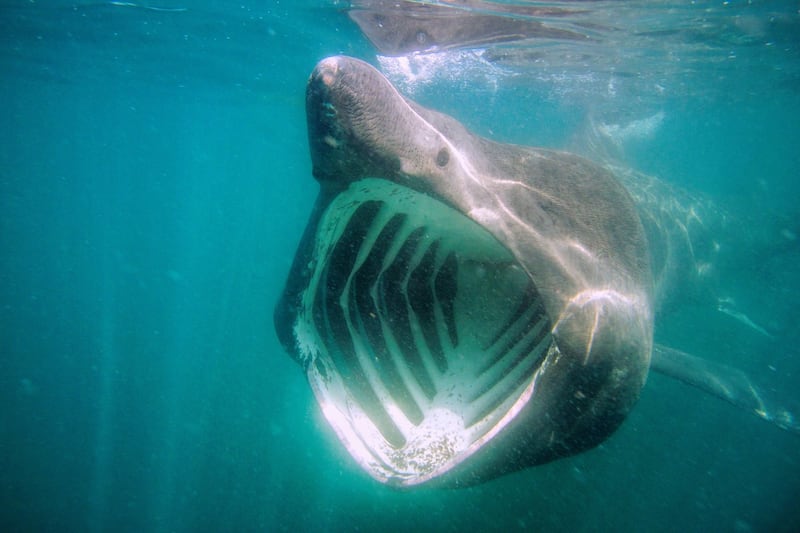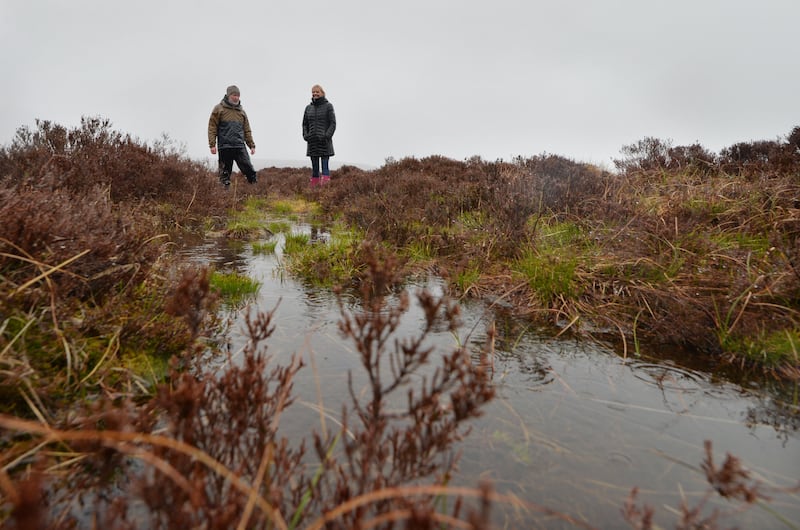The Earth could lose more than a tenth of its plant and animal species by the end of the century based on current trends, according to a major study.
The climate crisis will drive an accelerating cascade of extinctions in coming decades, as predators lose their prey, parasites lose their hosts, and temperature rises fracture Earth’s web of life, scientists based in Finland and Australia predict. They also highlight the risk of “co-extinctions”.
From leaf frogs to basking sharks, the extinction risk of plants and animals is typically monitored on the IUCN red list, where scientists have published their analysis on threats to more than 150,388 species. Its recently updated list indicates more than 42,000 (27 per cent) could go extinct – often due to human behaviour.
However, the research published in Scientific Advances on Friday has used a supercomputer to model “a synthetic Earth” complete with virtual species to understand the effect global heating and land-use change could have on the web of life.
RM Block
The researchers say 6 per cent of plants and animals will disappear by 2050 in a middle-of-the-road emissions scenario, which the world appears to be heading for, rising to 13 per cent by the end of the century. In the worst case scenario of global heating, they estimate 27 per cent of plants and animals could disappear by 2100.
“We have populated a virtual world from the ground up and mapped the resulting fate of thousands of species across the globe to determine the likelihood of real-world tipping points,” said co-author Dr Giovanni Strona of the University of Helsinki.
“This study is unique because it accounts also for the secondary effect on biodiversity, estimating the effect of species going extinct in local food webs beyond direct effects. The results demonstrate that interlinkages within food webs worsen biodiversity loss,” said co-author Prof Corey Bradshaw of Flinders University in Australia.
“Think of a predatory species that loses its prey to climate change. The loss of the prey species is a ‘primary extinction’ because it succumbed directly to a disturbance. But with nothing to eat, its predator will also go extinct (a co-extinction). Or, imagine a parasite losing its host to deforestation, or a flowering plant losing its pollinators because it becomes too warm. Every species depends on others in some way,” he explained.

Using hundreds of virtual Earths populated by more than 33,000 species, the scientists looked at how relationships between virtual plants and animals changed due to different biodiversity loss drivers. The virtual species were able to recolonise new regions of the planet and adapt to changing conditions in the model, they note, while climate change would be the main driver of extinctions.
Call to end overconsumption
The research comes as talks at Cop15, the biggest biodiversity conference in a decade, reach critical point in Montreal. In an open letter, more than 2,700 scientists have called on governments to tackle overconsumption of the Earth’s resources in the final text and to begin reversing biodiversity loss by 2030.
“The Parties to Cop15 must commit to halting and starting to reverse biodiversity loss by 2030, to set us on a pathway to recovery where ecosystems can provide the functions that people need. There is a moral obligation to do so. Furthermore, it makes scientific sense, and is achievable if we act now, and act decisively. We owe this to ourselves and to future generations – we can’t wait any longer,” adds the letter from leading researchers.
Action on biodiversity loss in the Cop15 agreement must involve “an agricultural transformation”, they suggest, and they warn that a delay in meaningful action against the destruction of nature will exacerbate human poverty and inequity.
“We will not succeed without putting as much effort into the goals and targets relating to the fundamental drivers of ecosystem destruction and biodiversity loss, including making our supply chains resilient and sustainable,” they say.
Blanket bog funding
Meanwhile, new investment of €15 million in peatlands restoration on an all-island basis has been announced by Minister for Heritage Malcolm Noonan in an effort to boost Ireland’s biodiversity.

The funding will support blanket bogs and their habitats while enhancing cross-Border collaboration, knowledge sharing and expertise building.
The EU-funded Wild Atlantic Nature LIFE Integrated Project will receive €10 million from the Government’s Shared Island Fund and an additional €5 million in co-funding through the National Parks & Wildlife Service (NPWS).
The announcement recognises the success of agri-environmental and peatland restoration in high nature-value areas under results-based agri-environment payment schemes (RBPS), and the potential for knowledge exchange with the project partners Northern Ireland Environment Agency (NIEA) and NatureScot.
Since 2021, the Wild Atlantic Nature initiative has been working with communities, landowners, farming families and groups in the northwest of Ireland to conserve and improve blanket bogs and associated habitats.
A key strength has been the success of its RBPS, through which more than 800 farmers have benefited from funding directly linked to habitat quality on their farms, and “ecosystem services” they provide including clean water, carbon storage and biodiversity.
The funding will build capacity at local and national levels through upskilling, training and education programmes and restoration work.
Sites in Ireland, Northern Ireland and Scotland will be selected to showcase peatland restoration including private and public lands, demonstration of restoration of erosion impacts, reactivation of drained peatlands, forest-to-bog restoration, control of alien invasive species, addressing grazing pressures, improving community engagement and increasing education.
Mr Noonan said: “The success of this project to date has been based on co-operation with local communities, particularly farmers, to take simple actions to improve habitats on farmland. This new funding will allow us to overall develop capacity, share expertise and to intensify our efforts in peatland recovery on a collaborative cross-Border basis.”
A lack of technical and organisational capacity in peatland restoration is a barrier to preventing the ongoing decline of our peatlands – this funding will help to bridge that gap, he added.
“I’ve just returned from Cop15 where the link between biodiversity and climate change is being discussed by many. Biodiversity knows no borders and this collaboration reflects that the importance of partner organisations working together across jurisdictions to protect and improve our natural environment,” he added.
Peatlands were a perfect example of how nature could help with mitigating the effects of climate change while the funding would help strengthen efforts to restore more peatlands to deliver climate and ecosystem services and create a more sustainable island, he said.
[ At least 7.5m tonnes of carbon captured by peatlands rehabilitated in 2021Opens in new window ]
Dr Derek McLoughlin, project manager of LIFE IP Wild Atlantic Nature, said: “We are delighted to be able to share the successes and learnings we’ve developed to date with organisations in Northern Ireland and Scotland and to, in turn, learn from expertise of those two organisations and apply it to the Irish context.
“With this funding we plan to set up lighthouse sites to develop multidimensional peatland restoration, in turn delivering social and environmental returns working in partnership with local communities. Learnings from this cross-Border collaboration will be integrated into the work of NPWS to support its role in peatland restoration and agri-environment schemes aimed at improving biodiversity.”
Dr Sara McGuckin of NIEA said: “Restoring our precious peatlands will play a critical role in addressing our nature and climate crises. We welcome this important Shared Island initiative and look forward to strengthening our collaborative working with our counterparts in Ireland and Scotland in pursuit of healthy, functioning peatlands and biodiversity.” – Additional reporting Guardian













